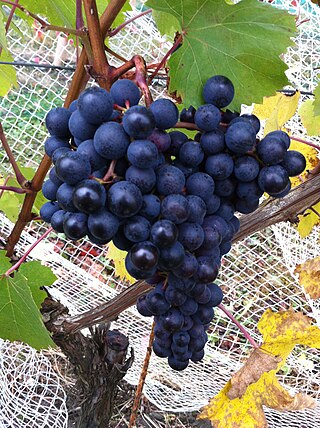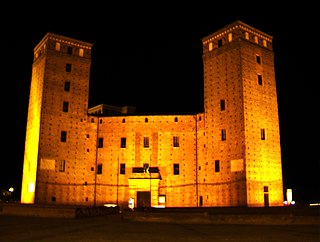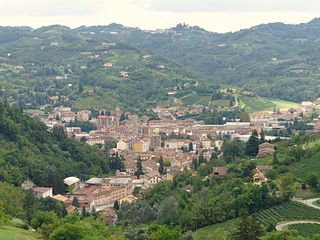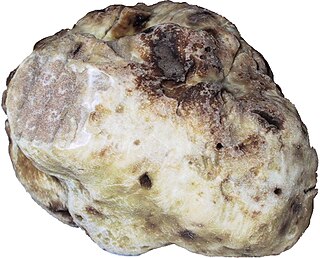
Piedmont, located in northwest Italy, is one of the 20 regions of Italy. It borders the Liguria region to the south, the Lombardy and Emilia-Romagna regions to the east, and the Aosta Valley region to the northwest; it also borders Switzerland to the north and France to the west. It has an area of 25,402 km2 (9,808 sq mi) making it the second largest region of Italy after Sicily; as of 31 January 2021, the population was 4,269,714. The capital of Piedmont is Turin, which was also the capital of the Kingdom of Italy from 1861 to 1865.

Asti is a comune (municipality) of 74,348 inhabitants (1–1–2021) located in the Italian region of Piedmont, about 55 kilometres east of Turin, in the plain of the Tanaro River. It is the capital of the province of Asti and it is deemed to be the modern capital of Montferrat.
Alba is the Scottish Gaelic name for Scotland.

Barolo is a red denominazione di origine controllata e garantita (DOCG) wine produced in the northern Italian region of Piedmont. It is made from the nebbiolo grape and is often described as one of Italy's greatest wines.

Alessandria is a city and comune in Piedmont, Italy, and the capital of the Province of Alessandria. The city is sited on the alluvial plain between the Tanaro and the Bormida rivers, about 90 kilometres east of Turin.

Dolcetto is a black Italian wine grape variety widely grown in the Piedmont region of northwest Italy. The Italian word dolcetto means "little sweet one", but it is not certain that the name originally carried any reference to the grape’s sugar levels: it is possible that it derives from the name of the hills where the vine is cultivated. In any case the wines produced are nearly always dry. They can be tannic and fruity with moderate, or decidedly low, levels of acidity and are typically meant to be consumed within a few years after release.

Montferrat is a historical region of Piedmont in Northern Italy. It comprises roughly the modern provinces of Alessandria and Asti. Montferrat is one of the most important wine districts of Italy. It also has a strong literary tradition, including the 18th century Asti-born poet and dramatist Vittorio Alfieri and the Alessandrian Umberto Eco.

The Langhe is a hilly area to the south and east of the river Tanaro in the provinces of Cuneo and Asti in Piedmont, northern Italy.

Tortona is a comune of Piemonte, in the Province of Alessandria, Italy. Tortona is sited on the right bank of the Scrivia between the plain of Marengo and the foothills of the Ligurian Apennines. Its frazione of Vho is one of I Borghi più belli d'Italia.

Acqui Terme is a city and comune in the province of Alessandria, Piedmont, northern Italy. It is about 35 kilometres (22 mi) south-southwest of Alessandria. It is one of the principal winemaking communes of the Italian DOCG wine Brachetto d'Acqui.

Fossano is a town and comune of Piedmont, Northern Italy. It is the fourth largest town of the province of Cuneo, after Cuneo, Alba and Bra.

Canelli is a comune (municipality) of 10,459 inhabitants in the Province of Asti in the Italian region of Piedmont.

Dogliani is a comune (municipality) in the Province of Cuneo in the Italian region Piedmont, located about 60 kilometres (37 mi) southeast of Turin and about 35 kilometres (22 mi) northeast of Cuneo.
Govone is an Italian town of 2,294 inhabitants in the province of Cuneo in Piedmont.

La Morra is a comune (municipality) in the Province of Cuneo in the Italian region Piedmont, located about 50 kilometres (31 mi) southeast of Turin and about 40 kilometres (25 mi) northeast of Cuneo. As of 31 December 2004, it had a population of 2,668 and an area of 24.3 square kilometres (9.4 sq mi).

Costigliole d'Asti is a small Italian town in the Province of Asti, southern Piedmont. It lies about 13 kilometres south of the city of Asti in the Alto Monferrato, on the edge of the Langhe, in the alluvial plain of the river Tanaro southwards into the hills. The name derives from the Latin Corte Costeliolae.

Roero is a geographical area in the north-east corner of the province of Cuneo in Piedmont, north-west Italy. This hilly region is known for its wines and for its fruit production: particularly the peaches of Canale and the local variety of pear known as Madernassa which originated in the late eighteenth century in Vezza d'Alba. Strawberries are also grown.

Tuber magnatum, the white truffle, is a species of truffle in the order Pezizales and family Tuberaceae. It is found in southern Europe and north Africa.

Macrino d'Alba was an Italian painter of the Renaissance period, active mainly in Piedmont, who is known for his altarpieces and portraits. His birth name was Gian Giacomo de' Alladio.

Piemonte wine is the range of Italian wines made in the region of Piedmont, in the northwestern corner of Italy. The best-known wines from the region include Barolo and Barbaresco. They are made from the Nebbiolo grape. These wines are ideal for storage and a well-aged Barolo for instance may leave a feeling of drinking velvet because the tannins are polished and integrated more and more into the wine. As the wine matures the colour becomes more brownish and rust-red.
























